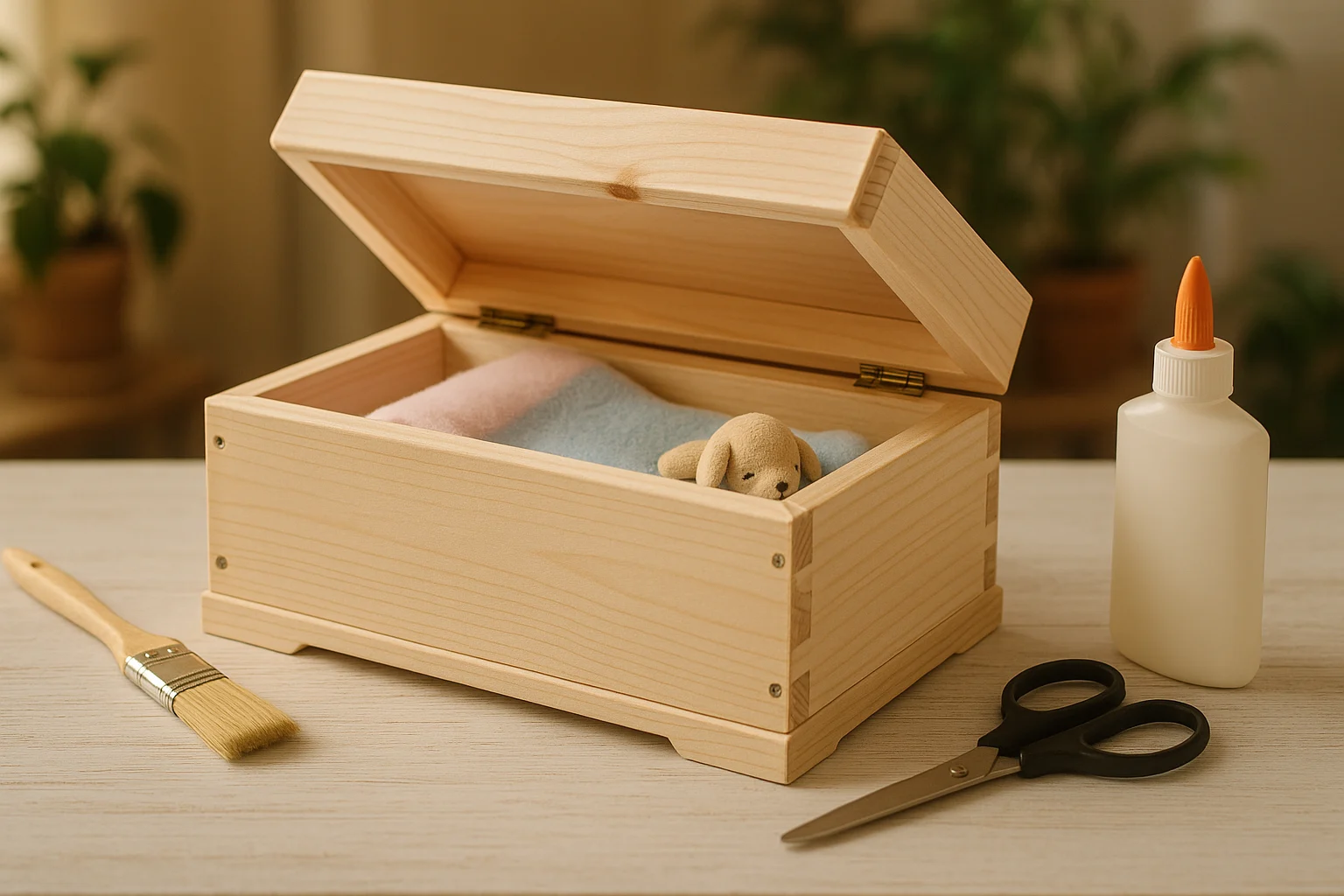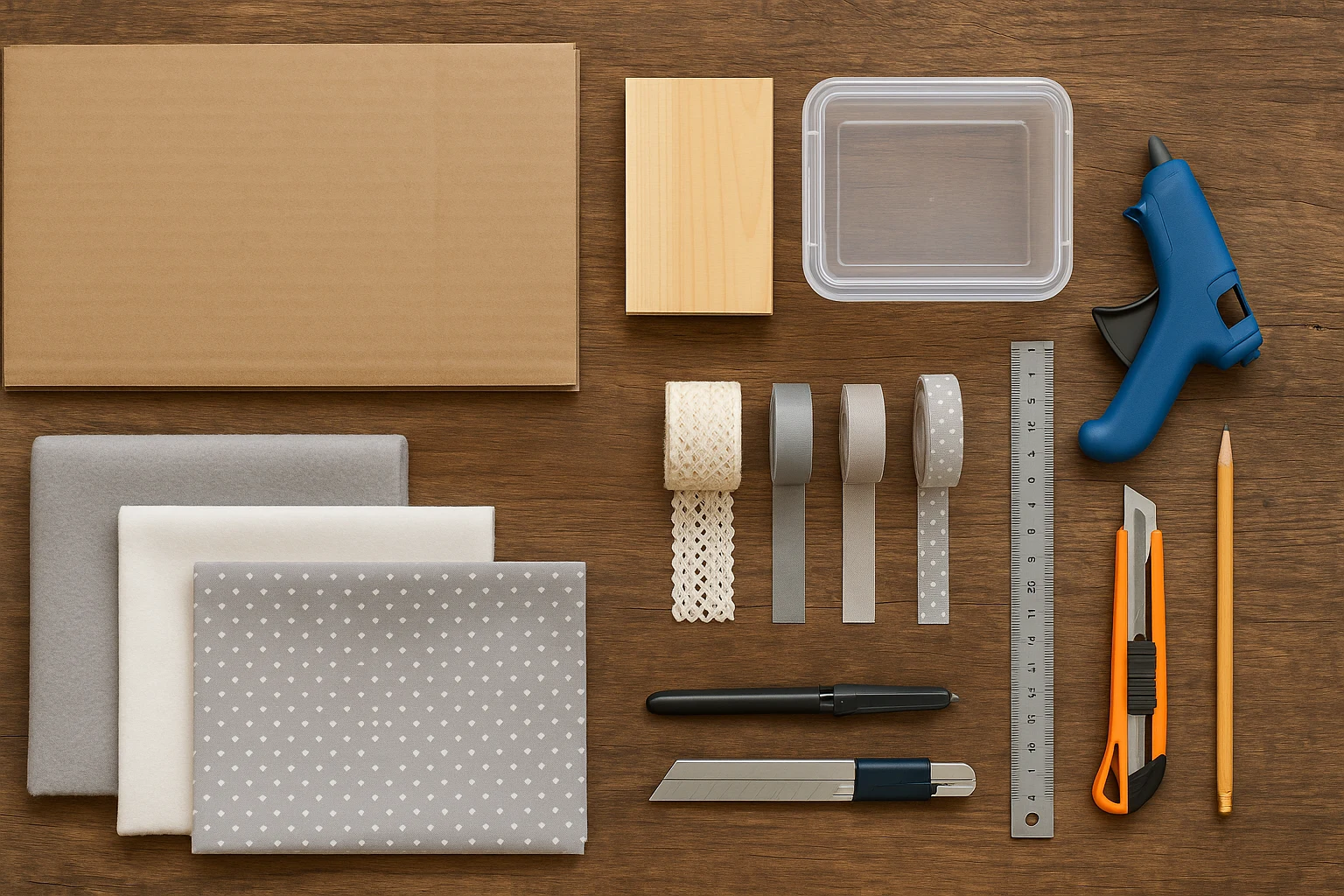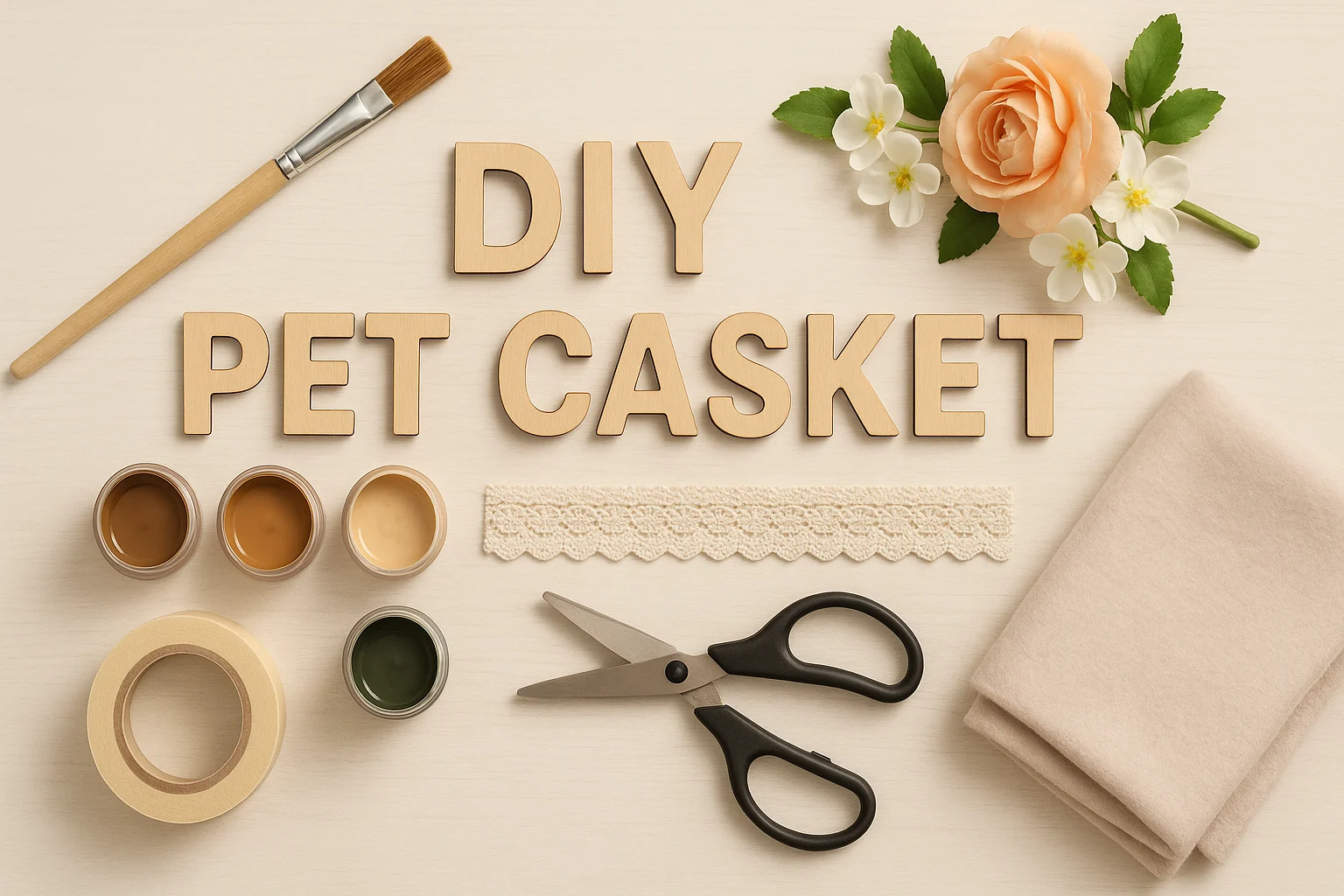
Saying goodbye hurts. Making a simple, beautiful casket turns that hurt into a last act of love—without spending much. In this DIY pet casket guide, you’ll learn how to craft a dignified resting place and personalize it with small keepsakes. If you want even more ideas to honor your buddy, browse our diy pet projects for thoughtful tributes and memory-makers.
Check Your Pet Casket Readiness!Table of Contents
- Why Build One Yourself?
- Measure for the Perfect Fit
- Choose Materials That Last
- Essential Supplies
- Step-by-Step Guide
- Casket Readiness Checker
- Important Considerations for Burial or Remembrance
- Frequently Asked Questions
- Closing Thoughts
Why Build a DIY Pet Casket?
When my dog Max passed, it broke my heart, and I couldn’t afford the fancy pet caskets I saw online. That’s when I realized a homemade pet casket was perfect — it’s cheap, comes from the heart, and lets you say goodbye in a way that feels right for your furry buddy.
Healing Through Creation
Building Max’s pet casket was hard, and oddly healing. It felt like one last kind thing I could do for him. When I painted Luna’s casket, the memories came back in a good way. Making one yourself becomes a quiet, hands-on way to say goodbye.
Exploring pet tribute ideas — including a simple handmade casket — lets you create something personal without a big budget.
Saving Money Without Skimping on Love
End-of-life costs pile up fast. Some pet caskets run $200 or more, which wasn’t realistic for me. Mine came in under $20 with a few dollar-store finds. If you’re trimming costs elsewhere, these tips to save money on pet care help, too. I put the leftover money toward a small rose bush for Max.
Making It Theirs: Pet Memorial Ideas
A handmade casket — one of the most touching pet memorial ideas — makes room for small details that feel like them. For Luna, I painted her favorite blue and tucked in her squeaky toy. Paw prints, a simple nameplate, or a collar all work; choose one or two that fit your pet.

Measure for the Perfect Fit
Before buying supplies, jot down a few measurements. A good fit leaves room for a soft lining and a small keepsake without feeling tight.
How to Measure With Care
If your pet has passed, move slowly and gently. If they’re still with you, take measurements while they’re resting. Here’s a simple way:
- Length: From the tip of their nose to the base of their tail.
- Width: Across their widest point, like shoulders or hips.
- Height: From the top of their back (or head, if taller) to their paws when lying down.
Pro tip: Add two to four inches to each number for padding and a keepsake so the fit isn’t tight.
Example: If your cat measures 16″ nose-to-tail, plan for ~18–20″ interior length so the lining and a small keepsake still fit comfortably.
Size Guide for Common Pets
Use this quick chart as a starting point, then adjust to your pet’s measurements:
| Pet Size Category | Examples | Approximate Internal Dimensions (L × W × H) |
|---|---|---|
| Small | Hamster, Guinea Pig, Bird | 6″ × 4″ × 4″ |
| Medium | Cat, Small Dog (e.g., Terrier) | 18″ × 10″ × 8″ |
| Large | Medium Dog (e.g., Beagle) | 24″ × 14″ × 10″ |
| Extra-Large | Large Dog (e.g., Labrador) | 36″ × 20″ × 15″ |
Always measure your pet to be sure it’s just right.
Choose Materials That Last
Pick materials that match your budget and tools. I’ve used things I already had at home plus a few low-cost finds from craft stores. These are the options that have worked well for me:
Cardboard Box: Cheap and Easy
Cardboard box: my usual starting point. It’s often free, cuts cleanly, and takes paint or markers without fuss.
- Often free (check your recycling bin) and easy to source.
- Simple to cut and fold; easy to decorate.
- Breaks down naturally — good for backyard burials.
- Watch for moisture and heavier pets; reinforce as needed.
Quick reinforcement: nest a second box, tape every seam, and slide flat panels along the base and sides.
Wooden Craft Box: Solid and Classy
Small wooden craft box: for Luna’s casket I used a 12×8×6 pine box. It felt sturdy and a bit more formal than cardboard.
- Holds its shape well — nice for display or sheltered burials.
- Easy to personalize (paint, stain, add a nameplate).
- Untreated wood will decompose over time.
- Usually $5–$15; larger sizes cost more and may need basic tools.
Plastic Containers: Tough but Not Green
Plastic bin: handy for short-term indoor use, but I don’t bury plastic.
- Waterproof and easy to wipe clean.
- Not biodegradable and less warm than wood or cardboard.
- Clean it well first — these frugal cleaning hacks help.
Eco tip: For backyard burials, choose biodegradable materials like reinforced cardboard or untreated wood so they break down naturally. For compassionate end-of-life guidance, see the ASPCA End-of-Life Care.
This post contains affiliate links. If you buy through our links, we may earn a commission at no extra cost to you. Learn more.
Essential Supplies
Mine came in under $20 because I kept the list short. Here’s a simple checklist:
- Casket base — cardboard box (free to $2), small pine craft box ($5–$15), or a 15-quart plastic bin ($5–$15) for short-term indoor use.
- Lining & padding — a soft fabric (old blanket or inexpensive fleece) and a little cotton batting for cushion.
- Adhesives & tools — craft/wood glue, a few hot-glue sticks, packing tape, scissors, a utility knife, a ruler, and a pencil.
- Personal touches — acrylic paint, paint pens, a small nameplate or wooden letters, ribbon, or a few dried flowers.
“Choose what you can afford, then add the love in the details.”
DIY Pet Casket: Step-by-Step Guide
We’ll go step by step—move at your own pace; there’s no rush.
Step 1: Gather Your Stuff
Clear a table and spread out your supplies. If you’re using cardboard, give it a quick smell check so there aren’t any odd odors.
Step 2: Prep the Base
Cardboard. Trim it to size, tape every seam inside and out, and slide flat panels along the base so it won’t bow.
Wood. Give rough edges a quick sand, test the lid for a smooth fit, and glue or screw any parts that need it.
Plastic. Wash and dry the bin, then confirm the lid snaps fully closed with no gaps.
Step 3: Add a Cozy Lining
This step adds the soft, personal touch that makes it feel like them:
- Pick fabric: A favorite blanket or soft towel works well.
- Cut it: Measure the bottom and sides, leaving a little extra to fold over the rim.
- Add padding: Use a thin layer of cotton batting (or shredded paper). No need to overfill.
- Glue it: Attach the fabric neatly and smooth out any wrinkles as you go.
Step 4: Make It Special
Now the box becomes a tribute — simple, personal, and enough:
- Nameplate: A small plaque with their name or dates.
- Decorate: Add paw prints or a favorite color — I used blue for Luna.
- Keepsakes: Tuck in one small item (a toy, collar, or short note). You could even craft DIY dog collar accessories as a final touch.
- Trim: A simple ribbon or lace along the edge is enough.
Step 5: Final Check
Give everything a last look. Wipe off glue smudges, make sure the lid closes well, and prepare the resting spot — outdoors or indoors — before you move your pet.

Casket Readiness Checker
Not sure if your casket is ready? This simple tool will help you check if it’s perfect for burial or remembrance.
Check Your Pet Casket Readiness
Answer these quick questions to see if your casket is set for your pet’s final resting place.
Important Considerations for Burial or Remembrance
This is a meaningful step, and a few small choices can make the goodbye gentler.
Local Burial Rules
Check your town’s rules before you begin. Many places require a certain depth or limit locations, and a quick call prevents surprises. You can also check your city’s animal-services page or ask your veterinarian’s office for local guidance.
Quick check: If you’re unsure, call your vet or local animal services for the exact requirements in your area.
Picking a Green Burial Spot
Choose a spot that feels special, like under a favorite tree. Follow local rules first. Many areas require at least 2–3 feet of soil cover; going deeper (3–5 feet) can help deter wildlife and support safe decomposition. Avoid water lines and vegetable beds, and mark the spot with a small plant or stone.
Safety note: If your pet was euthanized with barbiturates, ask your veterinarian about safe burial or alternatives to protect wildlife and waterways.
Gentle Placement
When it’s time, wrap your pet in a favorite blanket and add one small keepsake, like a toy or note. I placed Luna’s collar in her pet casket and closed it gently—it felt like a tender farewell.
Grief Support Resources
Making a handmade pet casket can stir up heavy emotions, especially if kids are involved, so consider frugal living tips for families to cope together. Helpful resources:
- Pet loss support hotlines: 1-877-GRIEF-10 (availability may vary). You can also try Cornell’s Pet Loss Support (607-218-7457; hours vary). The WSU phone hotline has ended; see WSU’s Pet Loss resources.
- Online Communities: Reddit’s r/PetLoss is great for sharing stories.
- Books: “The Loss of a Pet” by Wallace Sife can be comforting.
Frequently Asked Questions
- Check local rules: Some towns have burial depth and location requirements.
- Measure first: Add 2–4 inches to length, width, and height for lining and a small keepsake.
- Choose eco-friendly materials: Reinforced cardboard or untreated pine are easy and biodegradable.
- Keep it simple: Line with soft fabric, reinforce weak spots, and make sure the lid closes securely.
- Double it up: Nest one box inside another.
- Tape every seam: Inside and outside with packing tape.
- Add flat panels: Glue extra cardboard to the base and sides so they don’t bow.
- Mind the soil: In damp ground, line the outside with a paper or fabric wrap to reduce sogginess.
- Name or dates: A simple wood plaque or painted letters.
- Favorite color or pattern: Paint, a ribbon, or a fabric lining from a loved blanket.
- One keepsake: A collar, tag, or short note. Avoid food, batteries, or anything that could attract animals.
- Reinforced cardboard: Shoebox-style or mailing box, double-walled and taped.
- Small wooden craft box: Untreated pine you can sand and line.
- Base: reinforced cardboard or an untreated wooden box.
- Lining: soft fabric (towel or blanket) plus thin cotton batting.
- Adhesives: craft/wood glue and packing tape; screws for wood if needed.
- Tools: scissors, utility knife, ruler, pencil, and sandpaper (for wood).
- Optional: paint pens, ribbon, or a small nameplate.
Closing Thoughts on Pet Memorial Ideas
Making a pet casket — one of the most meaningful pet remembrance ideas — is more than a project; it’s a small, final gift. From picking materials to tucking in a favorite toy, each step honors your bond. Their spirit stays with you.
For more budget-friendly ideas, explore our Complete Guide to DIY Pet Projects.